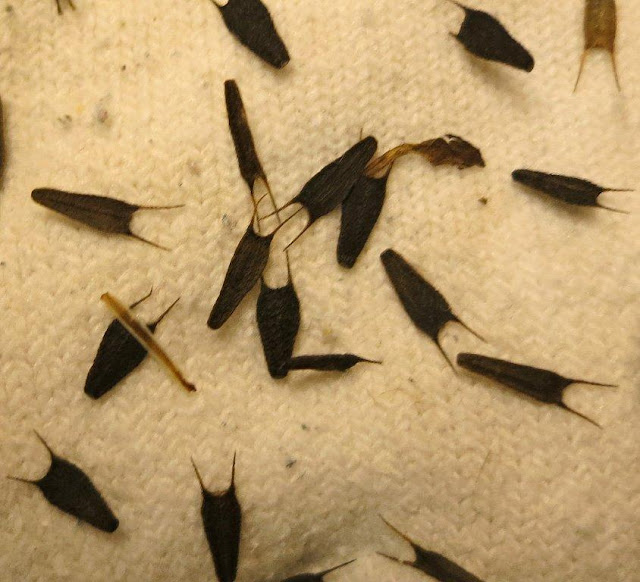I've found that usually when we go out exploring, no matter how much we've tried to find out about our destination beforehand, there is usually at least one surprise in store for us. Here is the unexpected sight that we came upon recently at Kiser Lake Wetlands State Nature Preserve:
Of course I had to get a closer look!
Clearly, this was the work of a North American Beaver (Castor canadensis), and it looked like that work was quite recent. I have seen lots of beaver evidence in my years of hiking and working outdoors, but never have I seen a freshly-gnawed half-felled tree, looking as precarious as this one was! I was tempted to see what would happen if I pushed it, but I resisted.
These large semi-aquatic nocturnal rodents eat tree bark and the cambium layer just under the bark. Obviously, this individual stripped the tree all the way down to the structural wood, as far up as it could reach, and then starting to gnaw into the wood to take down the tree. They also eat a variety of aquatic vegetation.
An even closer look reveals the beaver's tooth marks:
Work like this is likely to wear down the strongest of teeth; fortunately the beaver's strong incisors continue to grow throughout its life.
This seemed like a pretty big tree for a beaver to deal with, especially since the nearby stream was small and not flowing very rapidly. I didn't see any evidence of beaver dams nearby so I don't know what this tree's destination might be.
Beavers were extirpated in Ohio by 1830 after trapping by both Native Americans and settlers who sold the pelts for use in tall beaver felt hats, which were all the rage in England. The heaviest trapping occurred between 1750 and 1800.
About 100 years later, beavers were again active in Ohio. Now, although seldom seen, they are quite common and often wreak havoc with culverts and flood control facilities. Their dam building also increases wildlife diversity and continuously changes the landscape in natural areas.
Since I've gotten kind of interested in Pleistocene mammals since I started doing this blog it is interesting to note that the North American Beaver that we are familiar with is not the first beaver species known to live in Ohio. That honor would have to go to the Giant Beaver (Castoroides ohioensis), which became extinct only 10,000 years ago. This animal was 7 1/2 feet long and weighed 400 pounds! In Ohio it ranged from the western border east to the Columbus area. What a different place this must have been!
For more beaver information and a cool video, check Jim McCormac's recent post over at Ohio Birds and Biodiversity.
Kaiser Lake Wetlands State Nature Preserve is well worth a visit with its boardwalk that allows access to an alkaline fen and marsh, rare habitats in this area. Here is a picture of Stiff Gentian (Gentiana quinquefolia), a lovely late-fall wildflower that often blooms into November:



























